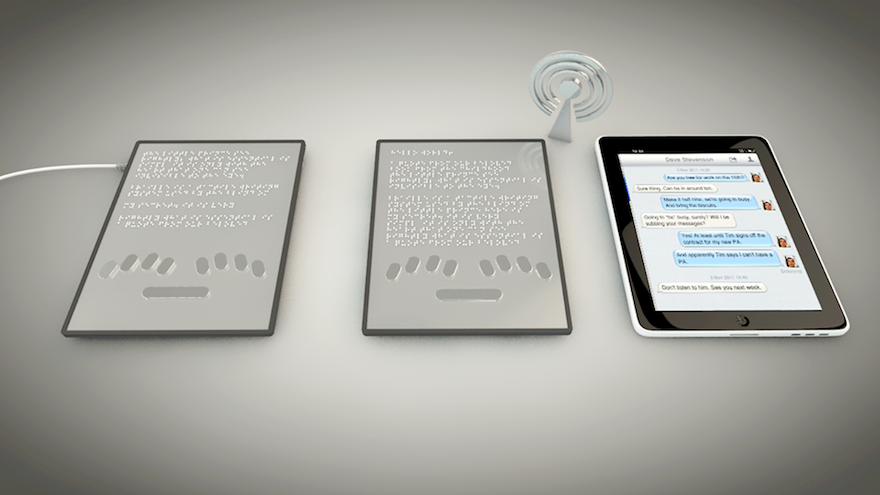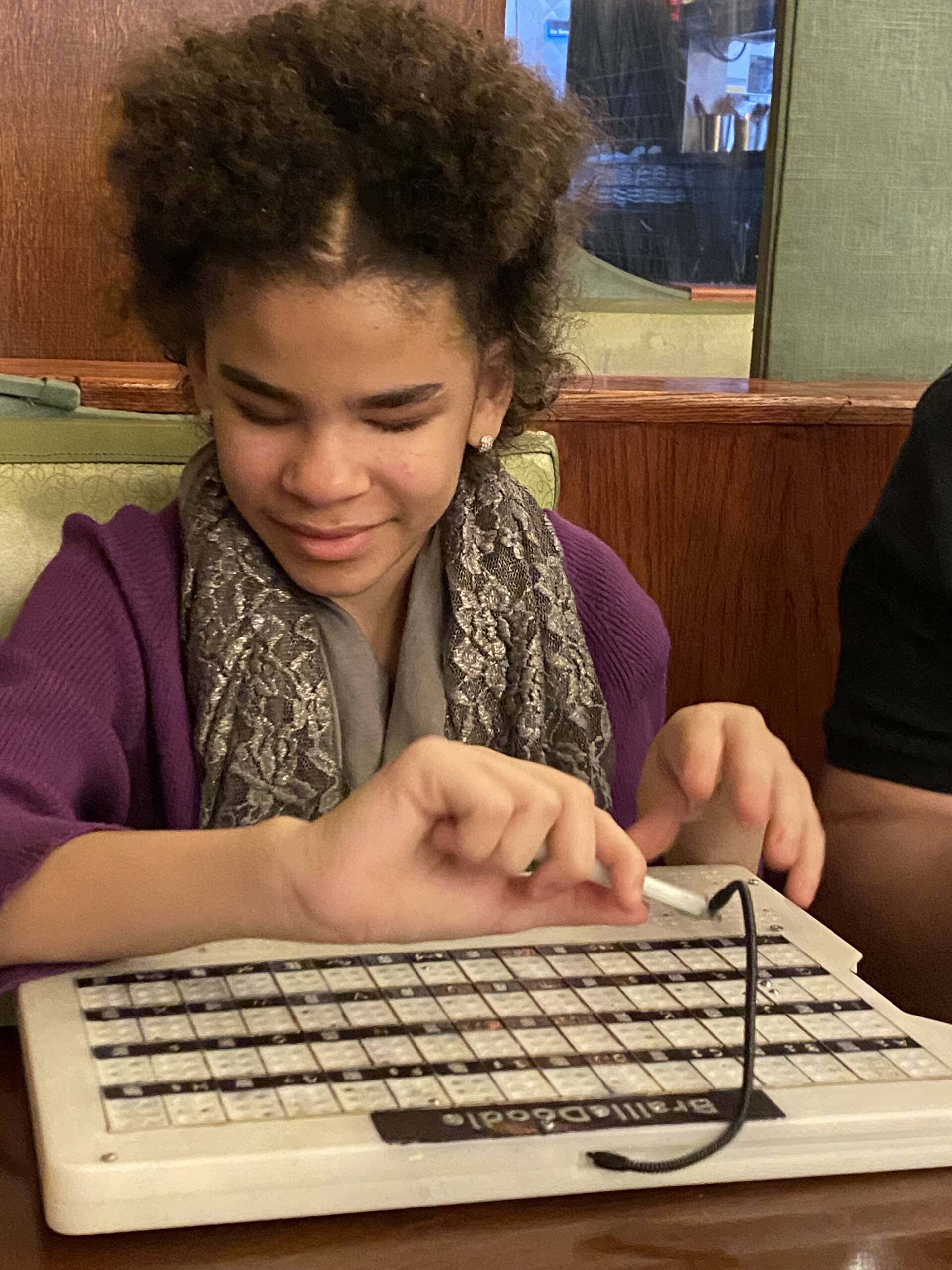Enhancing Lives With Advanced Assistive Tools for the Blind
The combination of advanced assistive devices for the blind is transforming how individuals experience their environments and communicate with their communities. What does this evolution imply for the future of assistive technology and its function in empowering individuals?
Review of Assistive Tools
Assistive devices for the blind include a diverse variety of devices and modern technologies made to enhance self-reliance and improve the lifestyle for individuals with aesthetic disabilities. These devices provide to various demands, from navigation and wheelchair to communication and daily job administration.
One of the main groups of assistive tools includes movement aids, such as white canes and overview pets, which aid individuals navigate their surroundings safely. Digital traveling help, furnished with sensors and audio feedback, additionally play a considerable function in wheelchair enhancement.
Furthermore, gadgets that help with day-to-day living activities, such as adaptive cooking area devices, Braille tags, and chatting watches, equip individuals to perform tasks independently. Communication aids, consisting of display visitors and Braille screens, promote accessibility to info and enable people to involve efficiently with the digital world.
Furthermore, low-tech remedies like multiplying glasses and large-print materials continue to be crucial for lots of individuals. Collectively, these assistive gadgets serve not only as practical devices however additionally as important enablers of freedom, cultivating better participation in a globe that commonly prioritizes sighted experiences. Their assimilation into day-to-day life is necessary for promoting inclusivity and boosting overall wellness for those with visual disabilities.
Innovative Technologies being used
Development in modern technology has significantly changed the landscape of tools offered for people with aesthetic disabilities. Amongst the most noteworthy improvements are clever glasses incorporated with increased reality, which provide real-time navigating assistance and item acknowledgment. These tools leverage progressed electronic cameras and expert system to provide acoustic cues, improving the customer's spatial understanding and freedom.
Additionally, mobile applications have become effective resources, enabling users to recognize money, read message out loud, and navigate strange settings with spoken instructions. Devices such as Braille screens and refreshable Braille tools remain to develop, providing smooth connection with smartphones and computers, thereby enhancing interaction and access to information.
Wearable technology, consisting of smartwatches equipped with voice-activated features, further encourages customers by helping with quick access to alerts and notifies without calling for aesthetic interaction. Tactile maps and 3D printing are additionally getting traction, using tangible representations of rooms that aid in positioning and wheelchair training.
Collectively, these cutting-edge modern technologies not just enhance the every day lives of visually damaged individuals yet additionally foster better self-reliance, inclusivity, and engagement with the broader area, consequently improving assumptions of accessibility. (Speech-to-text devices for low vision)
Individual Stories of Empowerment
Empowerment frequently emerges from personal experiences that highlight the transformative impact of modern technology on individuals with aesthetic impairments. Take, as an example, the tale of Sarah, a young artist that restored her interest for paint with making use of a smart walking cane furnished with barrier detection. This gadget not just promoted her movement yet instilled a newfound self-confidence, allowing her to browse public areas separately and seek her creative ventures.

These narratives emphasize the profound results that advanced assistive devices can carry life. By allowing individuals to overcome obstacles, modern technology cultivates a sense of freedom and self-worth. Such empowerment stories function as a testament to the possibility of innovation, showing how the right devices can substantially boost quality of life and open doors to brand-new possibilities for those with aesthetic problems.
Advantages of Advanced Solutions
The assimilation of sophisticated modern technology right into assistive gadgets substantially transforms daily experiences for those influenced by vision loss. Screen readers for the blind. Gadgets such as smart canes geared up with sensors, navigating applications, and wearable modern technology are developed to supply real-time feedback, boosting spatial awareness and reducing the dangers linked with movement.
Furthermore, progressed assistive technologies promote social addition by helping with communication and communication. Voice-activated tools and applications enable individuals to gain access to details and involve with their surroundings independently, Visit Your URL breaking barriers that formerly prevented their involvement in educational, expert, and social setups.
Additionally, the personalization and versatility of these read solutions accommodate the varied needs of users, consequently improving their overall high quality of life. Improved functionality, such as things recognition and text-to-speech abilities, equips people with aesthetic problems to execute tasks that they might have when found testing. Inevitably, advanced assistive innovations not just improve freedom and security but also promote dignity and self-respect, allowing users to lead fulfilling lives.
Future Trends in Assistive Tech
As modern technology continues to evolve, the landscape of assistive devices for the blind is positioned for impressive innovations that will further boost access and freedom. Arising trends in assistive innovation suggest a shift toward enhanced combination of expert system (AI) and device learning, making it possible for gadgets to adjust to specific user requires in real-time. These advancements are expected to assist in more instinctive navigating systems that can identify challenges and offer audio feedback, significantly boosting outside flexibility.
In addition, the advancement of wearable tech, such as wise glasses geared up with increased truth, will allow individuals to receive contextual info about their surroundings, therefore enhancing their spatial awareness. Advancements in haptic innovation promise to develop tactile responses tools, allowing individuals to regard details via touch, enhancing learning and interaction with their setting.
Telecommunication advances are additionally paving the method for remote help solutions, where qualified experts can offer guidance by means of video clip calls, guaranteeing assistance is readily easily accessible. As these trends unfold, the future of assistive gadgets for the blind will definitely cultivate greater autonomy, empowering people to navigate their globe with self-confidence and ease.

Final Thought
The assimilation of sophisticated assistive tools for the blind stands for a considerable development in fostering self-reliance and enhancing top quality of life. By using cutting-edge technologies, these devices empower individuals to browse their environments with greater self-confidence and autonomy. As the field remains to develop, ongoing research study and growth will likely generate great post to read even a lot more sophisticated options, better transforming the lived experiences of individuals with aesthetic impairments and promoting a greater feeling of inclusion within culture.
The assimilation of advanced assistive devices for the blind is transforming exactly how individuals experience their surroundings and engage with their areas. The assimilation of innovative modern technology into assistive devices considerably changes daily experiences for those affected by vision loss.As innovation continues to evolve, the landscape of assistive gadgets for the blind is poised for amazing advancements that will certainly better boost accessibility and freedom. Emerging fads in assistive innovation show a change towards boosted integration of man-made knowledge (AI) and device knowing, allowing tools to adjust to individual user needs in real-time.The combination of advanced assistive tools for the blind stands for a considerable development in fostering independence and enhancing quality of life.